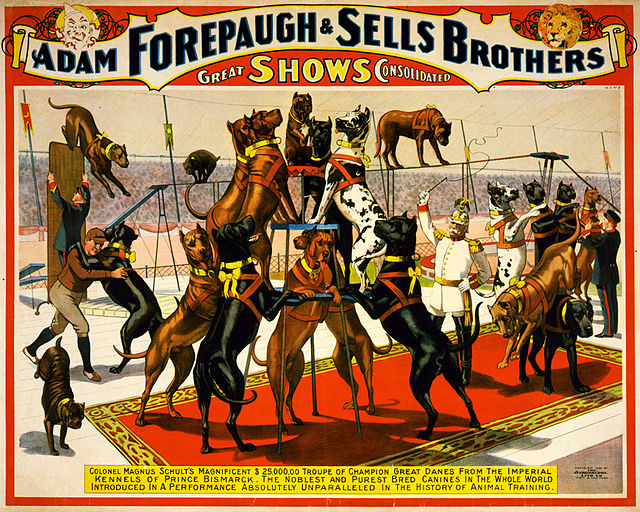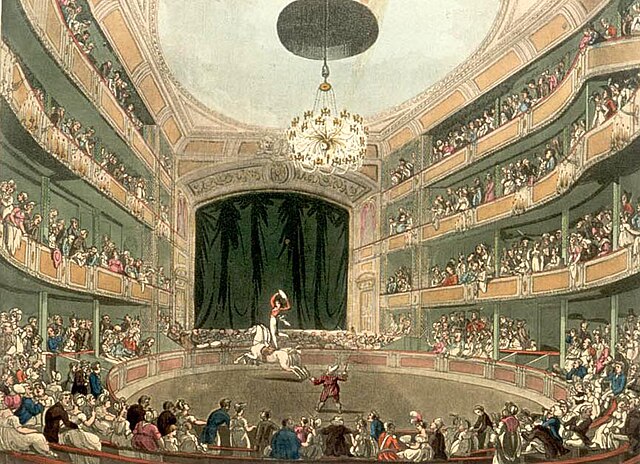Contemporary circus is a contested term in circus studies. In this article, it is used in contrast to the term 'traditional circus', combining with the genre elsewhere disambiguated as new circus or nouveau cirque. Many circus scholars prefer to separate these styles, as elaborated in circus. Contemporary circus, by this definition, is a genre of performing arts developed in the late 20th century in which a story, theme, mood or question is conveyed through traditional circus skills.
For fans of animal performance in circus, this genre could arguably be found more akin to Variety as animals are rarely used, and traditional circus skills are blended with more choreographic, character-driven or mechanical approaches.
Cirque du Soleil performing Dralion in Vienna, 2004
A circus is a company of performers who put on diverse entertainment shows that may include clowns, acrobats, trained animals, trapeze acts, musicians, dancers, hoopers, tightrope walkers, jugglers, magicians, ventriloquists, and unicyclists as well as other object manipulation and stunt-oriented artists. The term circus also describes the field of performance, training and community which has followed various formats through its 250-year modern history. Although not the inventor of the medium, Newcastle-under-Lyme born Philip Astley is credited as the father of the modern circus.
Advertisement for the Barnum & Bailey Circus, 1900
Sells Brothers Circus with Great Danes
Astley's Amphitheatre in London, c. 1808
Circus Ronaldo





